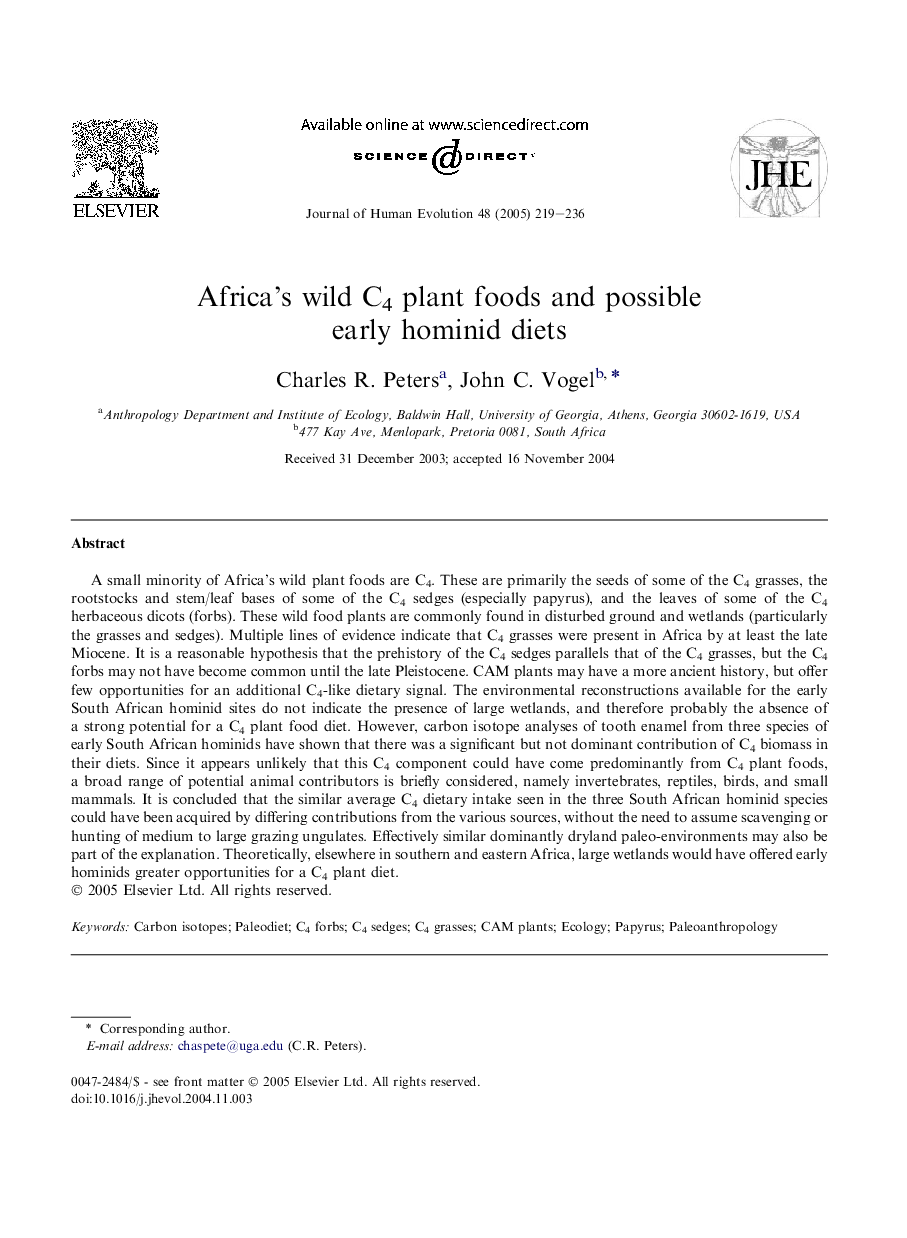| کد مقاله | کد نشریه | سال انتشار | مقاله انگلیسی | نسخه تمام متن |
|---|---|---|---|---|
| 9485994 | 1329561 | 2005 | 18 صفحه PDF | دانلود رایگان |
عنوان انگلیسی مقاله ISI
Africa's wild C4 plant foods and possible early hominid diets
دانلود مقاله + سفارش ترجمه
دانلود مقاله ISI انگلیسی
رایگان برای ایرانیان
کلمات کلیدی
موضوعات مرتبط
علوم زیستی و بیوفناوری
علوم کشاورزی و بیولوژیک
بوم شناسی، تکامل، رفتار و سامانه شناسی
پیش نمایش صفحه اول مقاله

چکیده انگلیسی
A small minority of Africa's wild plant foods are C4. These are primarily the seeds of some of the C4 grasses, the rootstocks and stem/leaf bases of some of the C4 sedges (especially papyrus), and the leaves of some of the C4 herbaceous dicots (forbs). These wild food plants are commonly found in disturbed ground and wetlands (particularly the grasses and sedges). Multiple lines of evidence indicate that C4 grasses were present in Africa by at least the late Miocene. It is a reasonable hypothesis that the prehistory of the C4 sedges parallels that of the C4 grasses, but the C4 forbs may not have become common until the late Pleistocene. CAM plants may have a more ancient history, but offer few opportunities for an additional C4-like dietary signal. The environmental reconstructions available for the early South African hominid sites do not indicate the presence of large wetlands, and therefore probably the absence of a strong potential for a C4 plant food diet. However, carbon isotope analyses of tooth enamel from three species of early South African hominids have shown that there was a significant but not dominant contribution of C4 biomass in their diets. Since it appears unlikely that this C4 component could have come predominantly from C4 plant foods, a broad range of potential animal contributors is briefly considered, namely invertebrates, reptiles, birds, and small mammals. It is concluded that the similar average C4 dietary intake seen in the three South African hominid species could have been acquired by differing contributions from the various sources, without the need to assume scavenging or hunting of medium to large grazing ungulates. Effectively similar dominantly dryland paleo-environments may also be part of the explanation. Theoretically, elsewhere in southern and eastern Africa, large wetlands would have offered early hominids greater opportunities for a C4 plant diet.
ناشر
Database: Elsevier - ScienceDirect (ساینس دایرکت)
Journal: Journal of Human Evolution - Volume 48, Issue 3, March 2005, Pages 219-236
Journal: Journal of Human Evolution - Volume 48, Issue 3, March 2005, Pages 219-236
نویسندگان
Charles R. Peters, John C. Vogel,